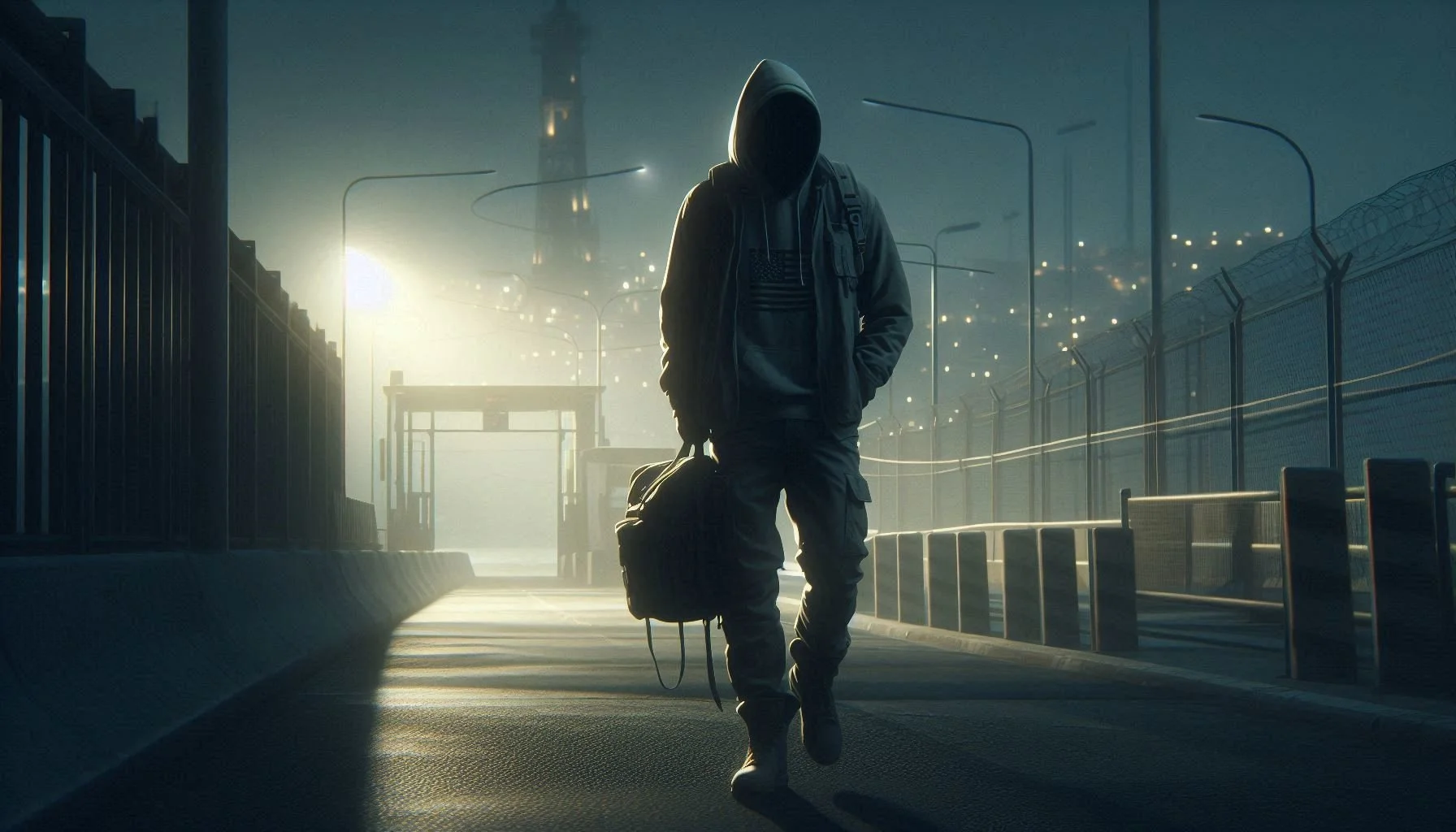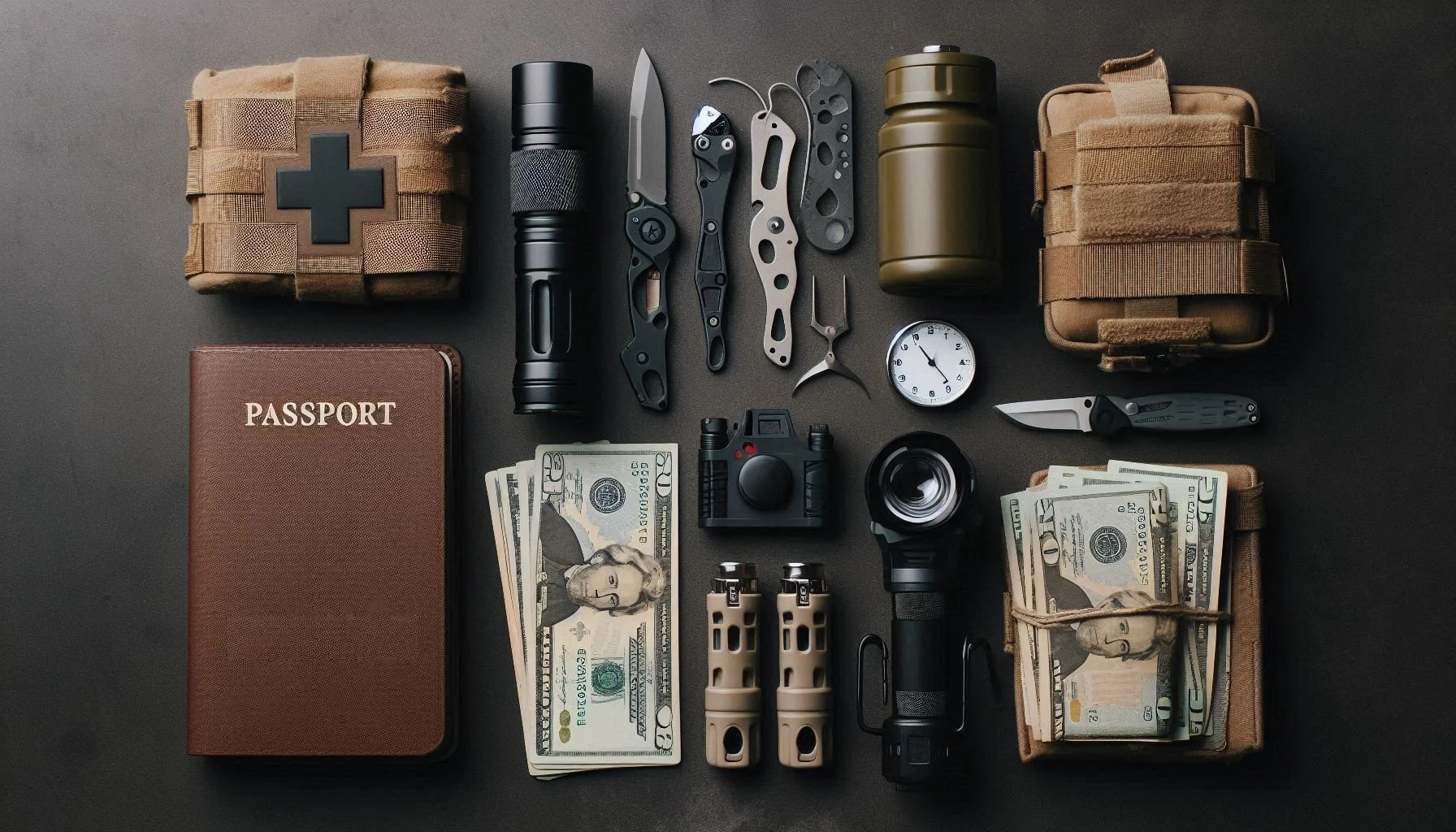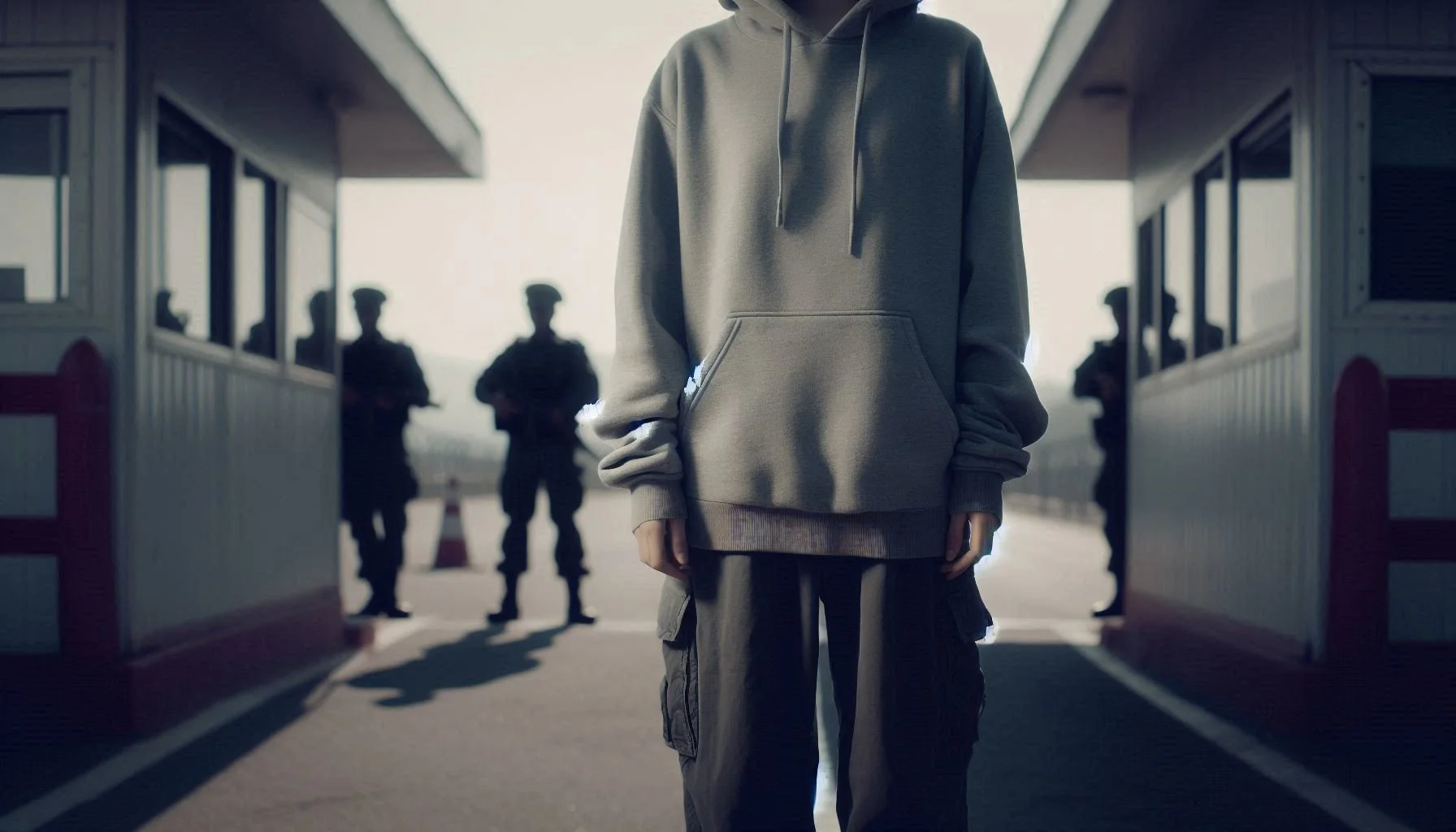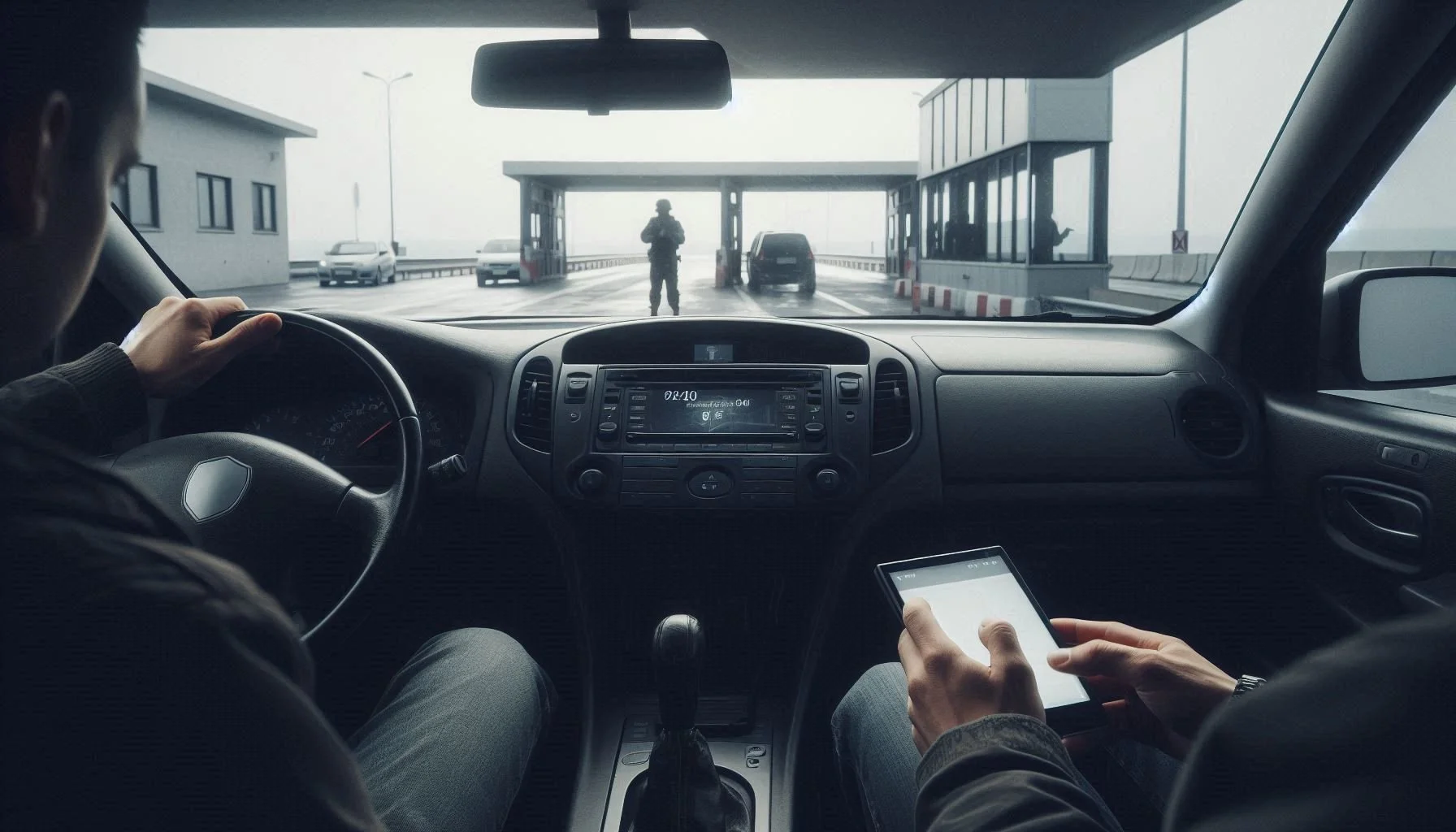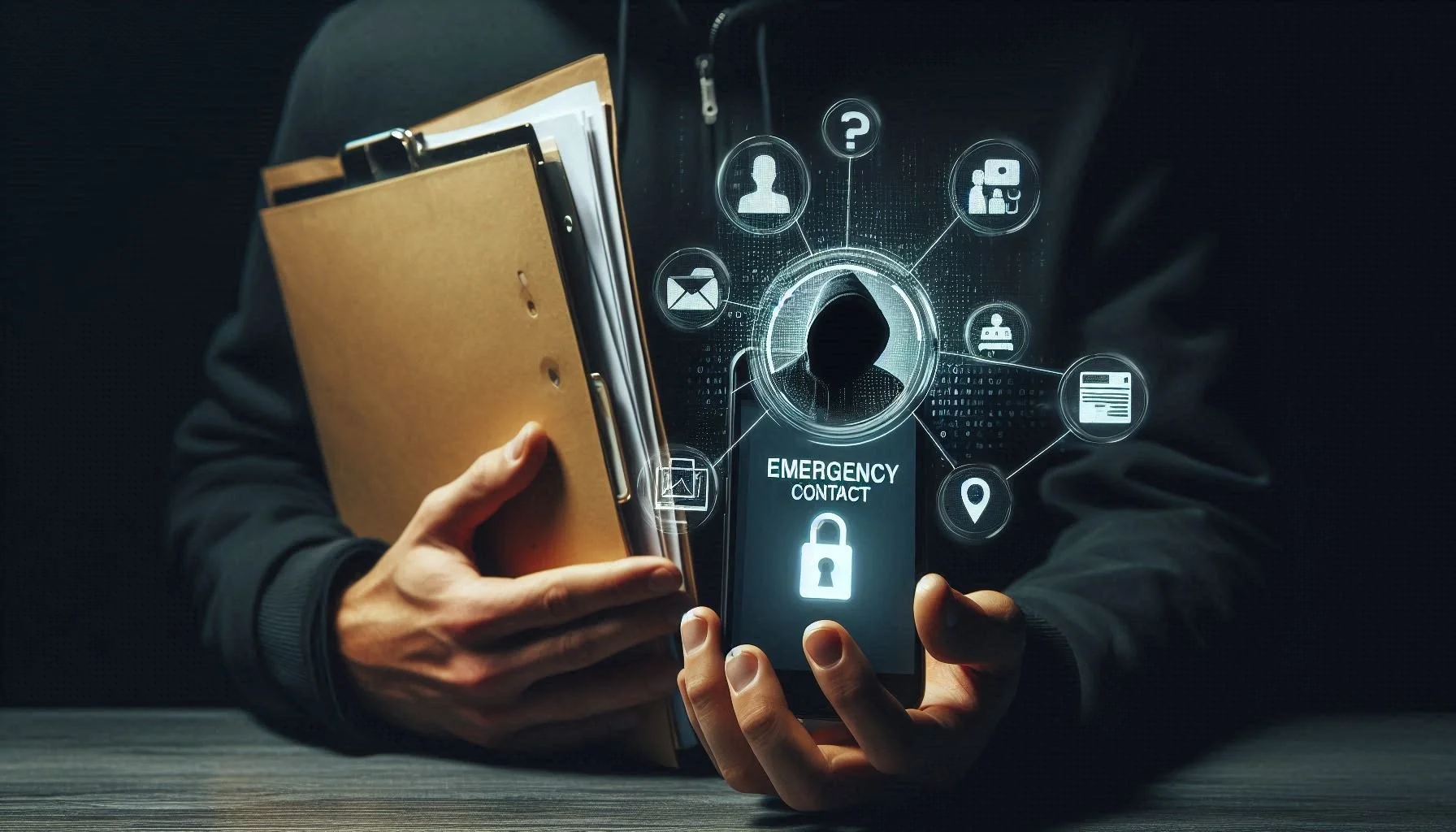How to Act at a Checkpoint or Border
In today's unpredictable world, where crises such as war or a state of emergency can arise unexpectedly, being stopped at a checkpoint or border presents a serious challenge. In such situations, proper behavior and preparation can not only facilitate interactions with authorities or military personnel but also save lives. This article offers practical advice based on the principles of grayman (inconspicuousness), prepper (preparedness for emergencies), and bugout (rapid evacuation) to help you navigate checkpoints safely and effectively. The focus is on minimizing risks through thorough preparation, calm behavior, and avoiding unnecessary attention, enabling you to maintain control even in the most challenging circumstances.
Preliminary Preparation (Prepper Approach)
Effective interaction at a checkpoint or border during a crisis, such as war or a state of emergency, hinges on meticulous preparation, which forms the core of the prepper approach. This stage not only increases your chances of passing checks safely but also instills confidence and control in stressful situations. Properly organizing documents, a bugout bag, and informational resources allows you to minimize risks, avoid unwanted attention, and be ready for any scenario, from a planned border crossing to an emergency evacuation.
Documents
Documents are your primary and most critical tool when dealing with authorities or military personnel. Always carry originals of your passport, ID, visas, or other identification required for the specific situation. Keep physical copies of these documents in a waterproof bag or sealed container to protect them from moisture or damage. For added security, create digital copies of all essential documents and store them on an encrypted USB drive or in a secure cloud service with offline access. This is particularly important if originals are lost or you encounter technical issues. Consider additional documents that could ease the inspection process: medical certificates (e.g., for vaccinations or chronic conditions), permits for transporting specific items (medications, equipment), or confirmation letters (e.g., from an employer or organization). All documents should be organized, easily accessible, and free of anything that could raise suspicion.
Bugout Bag
A bugout bag is a cornerstone of the prepper approach, enabling you to be ready for rapid response in crisis situations. It should be compact yet contain everything needed to survive for at least three days. The essential kit includes: drinking water (1-2 liters per day), long-shelf-life food (energy bars, freeze-dried meals, nuts), a first-aid kit (prescription medications, painkillers, antiseptics, bandages), cash in small denominations (in the local currency and a universal currency like dollars or euros), a multi-tool, a compact flashlight with spare batteries, and fire-starting tools (matches or a lighter in a waterproof case). Adhering to the grayman principle is crucial: avoid bags with a military or tactical appearance that might draw attention. Opt for a neutral backpack in gray, black, or another inconspicuous color that blends into a crowd. Organize the contents for quick access while ensuring they don't appear suspicious during an inspection. For example, avoid placing knives or tools in outer pockets.
Informational Preparation
Knowledge is power, especially in uncertain conditions. Study potential routes to your destination in advance, including main roads, alternative paths, and possible checkpoint locations. In a crisis, information about checkpoints may be scarce, so use offline maps (e.g., apps like Maps.me) and paper maps as a backup. A GPS navigator with spare batteries or a portable charger will help you stay on course even without connectivity. Research the rules for crossing borders or behaving at checkpoints in the specific country: what items are prohibited, what documents may be required, and what fines or restrictions apply. If possible, gather up-to-date information from reliable sources, such as official announcements or local communities. Preparing this information in advance helps you avoid panic and make informed decisions under pressure.
Thorough preparation in these three areas-documents, bugout bag, and information-creates a solid foundation for safe interactions at checkpoints or borders. It enables you to act confidently, stay calm, and minimize risks, whether you're following a planned route or forced to evacuate quickly in a bugout scenario.
Grayman Approach During a Stop
In crisis situations, such as war or a state of emergency, being stopped at a checkpoint or border can be a tense moment where every detail of your behavior or appearance can influence the outcome. The grayman approach, rooted in maximum inconspicuousness, helps you avoid unwanted attention and reduce risks during inspections. The goal is to appear as an ordinary person who raises no suspicion among inspectors, whether they are military, police, or border guards. This requires a deliberate strategy in your appearance, behavior, and vehicle preparation to pass checks calmly, without complications, and without drawing attention to yourself or your belongings.
Appearance
Your appearance is the first thing inspectors notice, so it must be as neutral as possible. Wear clothing in muted colors, such as gray, navy blue, black, or dark green, avoiding bright shades that attract attention. Camouflage, even if it seems practical, is strictly off-limits, as it may be associated with military or combat groups, immediately raising suspicion. Avoid clothing with prominent logos, political slogans, or symbols that could be misinterpreted. For example, a plain jacket, jeans, and sneakers are a better choice than tactical gear or a T-shirt with a bold print. Footwear should be comfortable for movement but not overly specialized, like military boots. Behavior is equally critical: remain calm, avoid sudden movements, and keep your hands visible to demonstrate you pose no threat. For instance, don't rummage in your pockets or make abrupt gestures that could be interpreted as an attempt to conceal something. Politeness and restraint in facial expressions and gestures help you appear as an ordinary person simply following instructions.
Communication
Effective communication at a checkpoint or border is the art of saying little but confidently. Your responses should be brief, clear, and to the point. For example, if asked where you're headed, state your destination and briefly mention the purpose of your trip, avoiding unnecessary details. A phrase like "I'm going to [city] to visit relatives" sounds neutral and is unlikely to prompt further questions. Avoid jokes, sarcasm, or comments on political topics, even if the situation feels casual-these can be misinterpreted and complicate the inspection. If you're unsure how to respond, it's better to say "I don't know" or "I don't remember" than to invent details that could raise suspicion. Maintain a calm tone of voice and moderate eye contact: look at the inspector but not too intensely to avoid seeming aggressive or nervous. If you're feeling anxious, take a few deep breaths before answering to compose yourself. Avoid gestures that might signal uncertainty, such as frequent glancing away or adjusting your clothing. If questions seem provocative or unclear, ask for clarification rather than guessing. For example: "Sorry, could you clarify what you mean?" This approach buys time and helps avoid mistakes.
Vehicle
If you're traveling by car, its condition and contents can significantly impact the inspection process. The vehicle should appear tidy and unsuspicious. Keep the interior clean, free of scattered items that might seem odd or dangerous. For example, knives, tools, or anything that could be perceived as a weapon should be stored in closed bags or the trunk, not on seats or in the glove compartment. Vehicle documents (registration, insurance) and your personal documents should be easily accessible, such as in a folder or organizer, so you can present them quickly without fumbling. Before traveling, check that the car contains no prohibited items (weapons, large sums of undeclared cash, questionable substances). If you're carrying something specific, like medications, ensure you have prescriptions or permits. Arrange luggage to allow easy inspection: inspectors will appreciate your cooperation if you can quickly open the trunk or show the contents of bags. However, avoid over-displaying items-just follow instructions without offering more than requested.
The grayman approach during a stop combines thoughtfulness, restraint, and attention to detail. Appropriate clothing, concise communication, and a prepared vehicle allow you to remain inconspicuous, avoid conflicts, and pass inspections with minimal complications. These principles not only reduce risks but also help you stay calm, which is critical in crisis situations.
Behavior at a Checkpoint or Border
A stop at a checkpoint or border during a crisis, such as war or a state of emergency, can be a high-stress moment where your behavior plays a pivotal role. Inspectors-whether military, police, or border guards-assess not only your documents or belongings but also how you conduct yourself. Proper behavior, rooted in calmness, clarity, and cooperation, helps avoid complications, reduce tension, and pass the inspection safely. This section details how to act during the initial contact, how to respond to questions, and how to handle conflicts to stay within the grayman approach and ensure maximum safety.
Initial Actions
The first few seconds of interaction with inspectors set the tone for the entire process. If you're in a vehicle, stay inside until explicitly instructed to exit. Keep your hands on the steering wheel or in another visible place, such as on your lap, to show you pose no threat. Avoid sudden movements, like reaching into a pocket or glove compartment without permission, as this could be seen as suspicious. If you're on foot, keep your hands free and avoid hiding them in pockets or behind your back-this demonstrates openness and a lack of intent to conceal anything. For example, if you have a bag or backpack, keep it on your shoulder or in hand but don't rummage through it unless directed. The key is to follow inspectors' instructions clearly and without delay. If asked to present documents, open the trunk, or exit the vehicle, do so calmly and without commentary. This behavior signals your willingness to cooperate, reducing the likelihood of escalation.
Responding to Questions
Communication with inspectors requires a balance of truthfulness and brevity. Always tell the truth, as lies or inconsistencies can raise suspicion and complicate the inspection. However, avoid providing excess information-answer only the questions asked. For instance, if asked where you're going, a response like "I'm heading to [city] to visit family" or "I'm crossing the border with a visa" is sufficient. Avoid lengthy explanations about your trip or personal plans, as these could prompt additional questions. To avoid nervousness, speak in a calm, even tone and maintain moderate eye contact-this conveys confidence without appearing confrontational. If you're nervous, take a few deep breaths before responding to steady yourself. Avoid gestures that might suggest uncertainty, like frequent glancing away or fidgeting with clothing. If a question seems provocative or unclear, ask for clarification rather than guessing. For example: "Sorry, could you clarify what you mean?" This approach buys time and helps avoid errors.
Handling Conflicts
Conflicts at a checkpoint or border can arise from misunderstandings, inspectors' suspicions, or your unintentional behavior. In such cases, staying calm and avoiding arguments is paramount. Raising your voice, acting aggressively, or trying to prove your point will only worsen the situation. If an inspector is rude or asks uncomfortable questions, remain polite and neutral. For example, you might say: "I understand your position, and I'm ready to cooperate." If the situation escalates-for instance, if you're denied passage or detained without explanation-calmly request to speak with a senior officer or responsible person. Phrase it politely: "Could I speak with a senior officer to clarify the situation?" This demonstrates your willingness to resolve the issue formally without creating confrontation. Avoid physical actions, such as pulling away or attempting to leave without permission, as these could be interpreted as flight or a threat. If the situation remains unresolved, keep records of documents and details (e.g., inspectors' names or ranks, if possible) to seek assistance from an embassy or other organizations later.
Proper behavior at a checkpoint or border combines calmness, cooperation, and attention to detail. Clear adherence to instructions, concise responses, and the ability to stay composed even in conflicts help you maintain the grayman approach, minimize risks, and pass inspections without unnecessary complications. These principles allow you to protect yourself and retain control, which is critical in crisis conditions.
Bugout Scenario: Emergency Evacuation
In crisis conditions, such as war, a state of emergency, or a natural disaster, you may need to quickly leave a dangerous area, bypassing checkpoints or borders. A bugout scenario is a strategy for emergency evacuation that demands swift decision-making, thorough planning, and maximum inconspicuousness to avoid dangers and inspections. Your ability to assess risks, choose the right route, and ensure safety on the move becomes critical. This section details how to prepare for an emergency evacuation, prioritize actions, and remain inconspicuous, leveraging grayman and prepper principles for safe travel in uncertain conditions.
Situation Assessment
The first step in a bugout scenario is a rapid and accurate assessment of the situation to determine whether it's safer to pass through a checkpoint or bypass it. Risk analysis involves evaluating the current environment: Is there information about heightened inspections? Is the checkpoint controlled by friendly forces? Are there reports of dangers, such as through local chats or radio? If passing a checkpoint seems too risky-due to rumors of detentions or property confiscation, for example-opt for an alternative route. Prepare offline maps in advance (e.g., apps like Maps.me or paper maps) to find bypass routes through secondary roads, trails, or rural areas. Study potential routes before a crisis begins, noting natural obstacles (rivers, mountains) and possible shelters (forests, villages). A GPS navigator with spare batteries or solar chargers is invaluable if connectivity or power is unavailable. When assessing the situation, consider the time of day and weather conditions: moving at night or during rain may reduce the chance of detection but increases navigation challenges.
Emergency Actions
In the event of an immediate evacuation, prioritize quickly gathering essentials and avoiding unnecessary risks. Your bugout bag, prepared in advance as part of the prepper approach, should contain only critical items: documents (passport, ID, copies), cash in small denominations (in local and universal currencies), drinking water (1-2 liters per day), long-shelf-life food (energy bars, freeze-dried meals), a first-aid kit (prescription medications, painkillers, antiseptics), and basic tools (multi-tool, flashlight). Avoid overloading the bag-it should be lightweight to allow swift movement. If possible, include a portable water filter to ensure long-term water supply. During evacuation, avoid main roads where checkpoints or patrols are likely. Instead, choose secondary rural roads or pedestrian trails, which are less likely to be monitored. If traveling in a group, keep it small (2-4 people) to avoid attention. Before moving, ensure your route avoids active conflict zones or other obvious dangers, using pre-gathered information.
Safety on the Move
Safety during a bugout scenario depends on your ability to remain inconspicuous and avoid contact with potentially dangerous groups. Traveling at night or in poor visibility conditions (fog, rain) can help avoid detection but requires extra caution due to limited visibility. Whenever possible, choose routes through natural cover, such as forests, ravines, or dense shrubbery, which provide protection from patrols or drones. Avoid large gatherings of people, like refugee camps or border queues, as they may be targets for inspections or other threats. When traveling in a group, assign roles: one person handles navigation, another monitors the surroundings. Adhere to the grayman principle: avoid bright clothing, loud conversations, or actions that could reveal your presence. If you must stop, choose locations offering cover, such as behind natural barriers or abandoned buildings. Avoid lighting fires unless absolutely necessary, as smoke or light can attract attention. Always have a fallback plan: if a route becomes dangerous, know where you can quickly retreat.
A bugout scenario demands a combination of speed, caution, and strategic thinking. By assessing the situation, preparing essential items, and ensuring safety on the move, you increase your chances of a successful evacuation while avoiding checkpoints and remaining inconspicuous. These principles, combined with prepper preparation and the grayman approach, keep you safe even in the most challenging conditions.
Legal Aspects
In crisis situations, such as war, a state of emergency, or widespread unrest, passing through checkpoints or borders requires not only physical and psychological preparation but also an understanding of legal aspects that can impact your safety and freedom. Ignorance of laws or behavioral rules can lead to detention, property confiscation, or more severe consequences. Legal awareness, as part of the prepper approach, enables you to act confidently, avoid violations, and be prepared for interactions with authorities or military personnel. This section covers key aspects of understanding regulations related to transporting items and behavior at checkpoints or borders, as well as the importance of having emergency contacts readily available for quick response in difficult situations. Combining these insights with grayman and bugout principles minimizes risks and provides legal protection in crisis conditions.
Knowledge of Rules
Understanding legal requirements and restrictions is critical for safely navigating checkpoints or borders. Each country has its own regulations on what can and cannot be transported. For example, carrying weapons, even if legal in your home country, may be strictly prohibited at a checkpoint or border without special permits. Ensure you have no knives, firearms, or items that could be classified as weapons unless you have proper documentation. Medications, especially prescription or narcotic drugs (e.g., strong painkillers), can also raise questions-always carry prescriptions or medical certificates verifying their necessity. Regarding cash, many countries impose limits on the amount you can carry without declaration (e.g., 10,000 euros in EU countries). Exceeding these limits without proper documentation can result in confiscation or fines. Additionally, study the rules of behavior at checkpoints or borders in the specific country: some may require additional documents, such as visas, exit permits, or vaccination certificates. For instance, during wartime, there may be special restrictions on the movement of men of certain ages or the transport of specific goods. Familiarize yourself with official sources, such as government or border service websites, to avoid surprises. This knowledge prepares you for inspections and helps avoid unintentional violations, aligning with the grayman approach of inconspicuousness and cooperation.
Emergency Contacts
Access to emergency contacts can be a lifesaver in crisis situations. Compile a list of phone numbers and addresses you might need in case of detention, conflict, or other issues at a checkpoint or border. Start with the contact details of your country's embassy or consulate in the region where you are or are heading. Embassies can provide legal advice, assist with evacuation, or contact your family if needed. Record not only phone numbers but also physical addresses, as communication may be limited. Include contacts for local human rights organizations that can help if your rights are violated, such as in cases of unlawful detention or property confiscation. Emergency service hotlines-police, ambulance, fire department-should also be readily available, especially if you encounter a dangerous situation outside a checkpoint. Store these contacts in multiple formats: on paper (in a waterproof bag with your documents), in your phone's notes, and, if possible, in an encrypted digital format. If traveling in a group, ensure everyone has access to this list. As part of the prepper approach, verify the accuracy of these contacts before your trip, as numbers or addresses may change in crisis conditions. Having these contacts allows you to respond quickly to unforeseen circumstances, such as seeking help if a checkpoint inspection drags on or legal issues arise.
Legal awareness and prepared emergency contacts are integral to a strategy for safely navigating checkpoints or borders. Knowing the rules helps avoid violations that could complicate your journey, while access to contacts provides protection in critical situations. Combining these principles with grayman inconspicuousness and bugout readiness ensures a solid foundation for safe travel, even in the most challenging conditions.
Conclusions
Navigating checkpoints or borders during crisis conditions, such as war or a state of emergency, demands thorough preparation, deliberate behavior, and the ability to adapt quickly to circumstances. This article has outlined key principles to help you safely overcome these challenges: preparation (prepper) ensures you have essential documents, a bugout bag, and knowledge of routes; inconspicuousness (grayman) helps you avoid attention through neutral appearance, concise communication, and a tidy vehicle; and rapid adaptation (bugout) enables effective action in emergencies, such as choosing bypass routes or safe paths. These principles are interconnected, forming a comprehensive approach to safe interactions with inspectors, minimizing the risks of detention or conflict. Call to action: check your documents, assemble a compact bugout bag with essentials (water, food, first-aid kit, cash), and study potential routes and border-crossing rules in your region. Final thought: proper preparation and calm, measured behavior not only reduce risks but also significantly increase your chances of safely passing a checkpoint or border, allowing you to maintain control even in the most difficult circumstances.
Disclaimer
This material is created for informational purposes only and does not constitute legal, political, financial, or security advice. The author is not responsible for any decisions or actions taken based on the information provided. The geopolitical situation, international relations, and other factors can change rapidly, so always verify data from multiple independent sources before making important decisions and, if necessary, consult qualified professionals.
Looking for more? Check out our other pieces on gray man, bugout, and prepper skills
How to Stay in Touch with Loved Ones During an Escape
Should You Evacuate to a Country with an Existing Diaspora?
How to Avoid Unwanted Questions - Smart Communication Strategies
How to Check if a Country Cooperates with a Repressive Regime
NordVPN vs Surfshark: Best VPN for Grayman, Prepper, and Bugout Privacy
The Digital Shadow in a World of Surveillance. Honest review of NordVPN
Honest Review of Surfshark VPN: How It Can Assist in Grayman, Prepper, and Bugout Approaches
